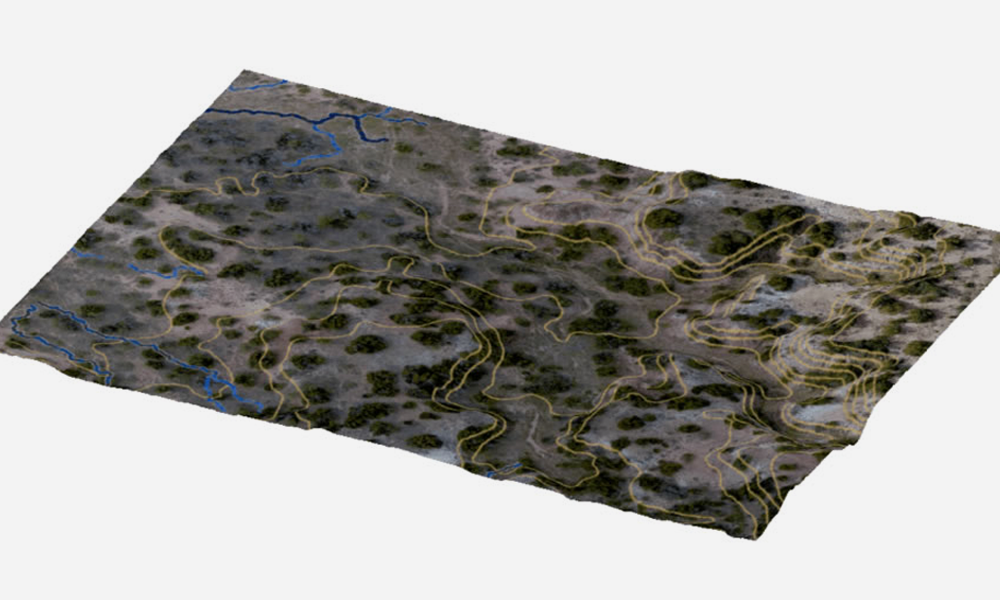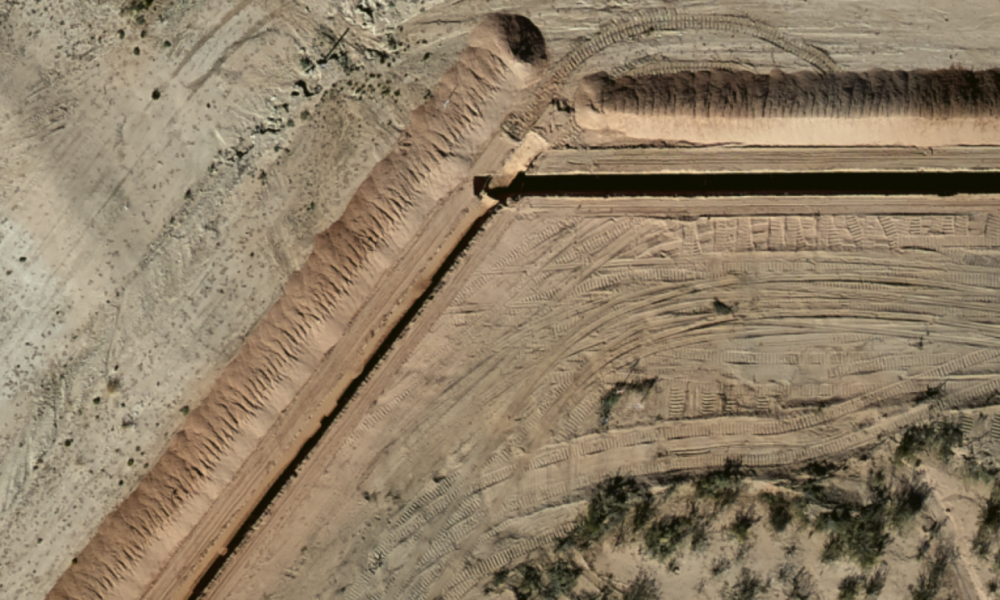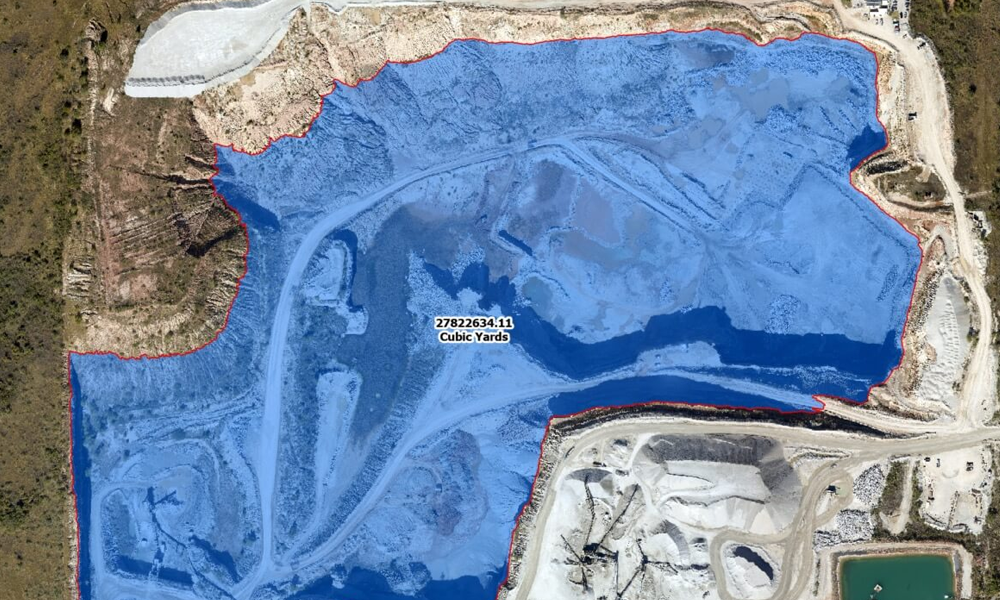Snowmelt Runoff Modeling Using LiDAR Snow-Depth Calculations
Snowmelt Runoff Modeling Using LiDAR Snow-Depth Calculations
Snowmelt Runoff Modeling Using LiDAR Snow-Depth Calculations
Snowmelt Runoff Modeling Using LiDAR Snow-Depth Calculations

Snowmelt runoff modeling (SRM) predicts the amount and timing of water that will flow down mountainsides as temperatures rise and snow melts. Understanding snowmelt is a major component to water resource management and holds the key to helping mitigate potential harm to people and property. In this article we explore how LiDAR, a remote sensing technology, can provide certain precise data needed to calculate effective SRMs.
Snowmelt is a major contributor to streams and rivers, providing sources of fresh water for irrigation and other uses. In addition, melting snowpack can replenish groundwater aquifers, support downstream ecosystems as well as provide additional water supplies during drier times of the year.
But snowmelt can pose serious threats. Rapid snowmelt can lead to increased runoff and flooding, which can cause damage to infrastructure and property. For Spring 2023, runoff fear across the Western U.S. is running high. After seeing nearly sixty-two feet of snowfall over winter, California’s statewide snowpack sits approximately 256% higher than normal for previous mid-Aprils. Residents are bracing for impact as parts of California face one of the largest snowmelts in state history.
Government agencies and infrastructure planners alike turn to snowmelt runoff modeling for answers in planning for (and dealing with) potential catastrophe.
Snowmelt runoff modeling (SRM) predicts the amount and timing of water that will flow down mountainsides as temperatures rise and snow melts. Understanding snowmelt is a major component to water resource management and holds the key to helping mitigate potential harm to people and property.
LiDAR Unlocks Snow-Depth Secrets
To properly build a snowmelt runoff model, hydrologists must collect various types of data, including snow cover data, precipitation data, temperature data, wind data, evapotranspiration data, and more. These datasets can be collected from both external sources (e.g., national meteorological agencies) as well as manual field measurements (e.g., ground-based instruments such as rain gauges). Remote sensing technologies such as LiDAR can also be instrumental, shedding invaluable, highly accurate light on critical surface characteristics that are instrumental in building effective SRMs.
LiDAR uses lasers to create a 3D image of a target by measuring the time it takes for the laser to bounce off the object and return. LiDAR is commonly used in snowmelt modeling due to its high accuracy and precision. It provides highly detailed data on the terrain, such as elevation and slope, as well as snow depth and accumulation, which are all critical inputs into a snowmelt runoff model.
LiDAR is also a very useful tool for measuring snow water equivalent (SWE), which is an important indicator used in snowmelt runoff modeling.
Snow water equivalent is defined as the amount of liquid water that can be derived from melting snowpack and is measured in inches or centimeters. It represents the amount of water, in liquid form, that would result if all the snow on the ground were to melt instantaneously. This value is important for hydrological processes since SWE can help predict the amount of meltwater runoff during warmer periods and inform water supply management strategies. SWE data can also be used to study the ecological impacts of melting snow, such as floods caused by rapid runoff and changes in available river flow. Collecting accurate data about land surface characteristics like slope, elevation
, and vegetation cover helps engineers understand the potential SWE. This information is key to designing infrastructure that can better withstand floods or other natural disasters resulting from intense snowmelt events.
Lidar measurement of snow depth: a review
“Repeat [LiDAR] surveys, including one snow-free collection and one or more snow-covered collections, allow the calculation of snow depth over sizeable geographic areas at fine resolutions and with high vertical accuracy, giving numerous advantages over manual surveys or larger-footprint sensors. Lidar can map snow depth, the primary source of spatial variability in SWE, at high spatial resolutions.”
Jeffrey S. Deems, Thomas H. Painter, and David C. Finnegan
Published online by Cambridge University Press
From a data collection standpoint, the use of LiDAR sensors mounted on manned aircraft is optimal. Fixed-wing aircraft can cover vast snow-covered areas with ease while providing a precise “date of capture,” delivering guaranteed up-to-date data not available from satellite sources.
Improved Precision in SRM Predictions
Advances in snowmelt runoff modeling can proactively flag potential dangers and protect critical infrastructure and property. For instance, modeling snowmelt runoff can help officials and stakeholders in identifying potential threats to infrastructure and taking necessary actions ahead of time to minimize damage. Building sustainable flood prevention strategies and implementing early warning systems can also help to inform communities and induce precautionary measures that ensure the safety of people and property.
The integration of LiDAR data gives a comprehensive picture of land surfaces before and after major snow events; allowing improved precision when it comes predicting potential floods caused by melting ice packs or estimating available future water supplies based on accumulated winter snows.
By using snowmelt runoff modeling to predict how snowmelt can impact areas at risk, government agencies and industrial planners alike can take steps to mitigate potential harm and take advantage of the positive benefits it provides.

Snowmelt runoff modeling (SRM) predicts the amount and timing of water that will flow down mountainsides as temperatures rise and snow melts. Understanding snowmelt is a major component to water resource management and holds the key to helping mitigate potential harm to people and property. In this article we explore how LiDAR, a remote sensing technology, can provide certain precise data needed to calculate effective SRMs.
Snowmelt is a major contributor to streams and rivers, providing sources of fresh water for irrigation and other uses. In addition, melting snowpack can replenish groundwater aquifers, support downstream ecosystems as well as provide additional water supplies during drier times of the year.
But snowmelt can pose serious threats. Rapid snowmelt can lead to increased runoff and flooding, which can cause damage to infrastructure and property. For Spring 2023, runoff fear across the Western U.S. is running high. After seeing nearly sixty-two feet of snowfall over winter, California’s statewide snowpack sits approximately 256% higher than normal for previous mid-Aprils. Residents are bracing for impact as parts of California face one of the largest snowmelts in state history.
Government agencies and infrastructure planners alike turn to snowmelt runoff modeling for answers in planning for (and dealing with) potential catastrophe.
Snowmelt runoff modeling (SRM) predicts the amount and timing of water that will flow down mountainsides as temperatures rise and snow melts. Understanding snowmelt is a major component to water resource management and holds the key to helping mitigate potential harm to people and property.
LiDAR Unlocks Snow-Depth Secrets
To properly build a snowmelt runoff model, hydrologists must collect various types of data, including snow cover data, precipitation data, temperature data, wind data, evapotranspiration data, and more. These datasets can be collected from both external sources (e.g., national meteorological agencies) as well as manual field measurements (e.g., ground-based instruments such as rain gauges). Remote sensing technologies such as LiDAR can also be instrumental, shedding invaluable, highly accurate light on critical surface characteristics that are instrumental in building effective SRMs.
LiDAR uses lasers to create a 3D image of a target by measuring the time it takes for the laser to bounce off the object and return. LiDAR is commonly used in snowmelt modeling due to its high accuracy and precision. It provides highly detailed data on the terrain, such as elevation and slope, as well as snow depth and accumulation, which are all critical inputs into a snowmelt runoff model.
LiDAR is also a very useful tool for measuring snow water equivalent (SWE), which is an important indicator used in snowmelt runoff modeling.
Snow water equivalent is defined as the amount of liquid water that can be derived from melting snowpack and is measured in inches or centimeters. It represents the amount of water, in liquid form, that would result if all the snow on the ground were to melt instantaneously. This value is important for hydrological processes since SWE can help predict the amount of meltwater runoff during warmer periods and inform water supply management strategies. SWE data can also be used to study the ecological impacts of melting snow, such as floods caused by rapid runoff and changes in available river flow. Collecting accurate data about land surface characteristics like slope, elevation
, and vegetation cover helps engineers understand the potential SWE. This information is key to designing infrastructure that can better withstand floods or other natural disasters resulting from intense snowmelt events.
Lidar measurement of snow depth: a review
“Repeat [LiDAR] surveys, including one snow-free collection and one or more snow-covered collections, allow the calculation of snow depth over sizeable geographic areas at fine resolutions and with high vertical accuracy, giving numerous advantages over manual surveys or larger-footprint sensors. Lidar can map snow depth, the primary source of spatial variability in SWE, at high spatial resolutions.”
Jeffrey S. Deems, Thomas H. Painter, and David C. Finnegan
Published online by Cambridge University Press
From a data collection standpoint, the use of LiDAR sensors mounted on manned aircraft is optimal. Fixed-wing aircraft can cover vast snow-covered areas with ease while providing a precise “date of capture,” delivering guaranteed up-to-date data not available from satellite sources.
Improved Precision in SRM Predictions
Advances in snowmelt runoff modeling can proactively flag potential dangers and protect critical infrastructure and property. For instance, modeling snowmelt runoff can help officials and stakeholders in identifying potential threats to infrastructure and taking necessary actions ahead of time to minimize damage. Building sustainable flood prevention strategies and implementing early warning systems can also help to inform communities and induce precautionary measures that ensure the safety of people and property.
The integration of LiDAR data gives a comprehensive picture of land surfaces before and after major snow events; allowing improved precision when it comes predicting potential floods caused by melting ice packs or estimating available future water supplies based on accumulated winter snows.
By using snowmelt runoff modeling to predict how snowmelt can impact areas at risk, government agencies and industrial planners alike can take steps to mitigate potential harm and take advantage of the positive benefits it provides.







